DOL Issues Revised FFCRA Regulations

DOL Issues Revised FFCRA Regulations
By Andrew L. Levy & Austin Wolfe on
The Department of Labor (“DOL”) issued revisions to its Temporary Rule implementing the Families First Coronavirus Response Act (“FFCRA”) on Friday, September 11, 2020 (the “Revised Temporary Rule”). The Revised Temporary Rule was issued in response to the decision by U.S. District Judge J. Paul Oetken of the Southern District of New York on August 3, 2020 (the “District Court Decision”), which had vacated portions of the DOL Temporary Regulations under the FFCRA (“The Original Temporary Rule”). Our blog post explaining the District Court Decision is found here.
The Revised Temporary Rule is set to be published on September 16, 2020 and will become effective immediately.
By way of summary, The Revised Temporary Rule addresses the following issues:
- DOL reaffirmed the requirement that FFCRA leave may only be taken if the employer has work available to the employee;
- DOL reaffirmed that employees must obtain permission from their employer in order to take intermittent FFCRA leave (when applicable), and provided further explanation of what constitutes intermittent leave due to school closures;
- DOL revised the definition of “health care provider” to mean that employers may exclude from FFCRA eligibility those employees who are employed to provide diagnostic services, preventive services, treatment services, or other services that are integrated with and necessary to the provision of patient care; and
- DOL revised the notice and documentation requirements to clarify that employees must provide notice of their need for leave as soon as practicable, but not in advance
The Work-Availability Requirement
The Original Temporary Rule provided that FFCRA leave was not available to an employee whose employer did not have work available at the time of the leave, since the language of the FFCRA grants paid leave only to employees who are “unable to work (or telework) due to a need for leave because” of one of six qualifying reasons related to COVID-19. The District Court Decision vacated the work availability requirement because it concluded that the language of the FFCRA could require either “but for” causation, or it could permit leave when the qualifying reason is one of several reasons why the employee is unable to work. The District Court found that the DOL had not adequately explained the basis for its interpretation of the FFCRA as requiring but for causation.
The Revised Temporary Rule makes clear that an employee is not eligible for paid leave for any of the qualifying reasons, unless the employer would otherwise have work for the employee to perform. The DOL also provided a more robust explanation of its interpretation that the FFCRA requires that the qualifying reason is the but for cause of the inability to work, which should ensure that the work availability requirement survives future judicial scrutiny.
In this regard, the Revised Temporary Rule provides much-needed clarity, as after the District Court Decision was issued, employers were left to choose between providing FFCRA paid leave to employees with qualifying reasons for whom no work was available and risking that the corresponding tax credit would be denied, or denying the leave in such circumstances based upon the work availability requirement and risking an employee lawsuit. It is now clear that FFCRA leave may not be taken if the employer has no work available for the employee for reasons unrelated to the qualifying reason.
Intermittent Leave
The Original Temporary Rule, (i) prohibited intermittent leave for on-site workers due to COVID-19 related illness, isolation or quarantine, and (ii) permitted intermittent leave for other qualifying reasons (such as COVID-19 related childcare) and for employees who can work remotely, but only if the employer agreed to permit the intermittent leave arrangement. The District Court Decision upheld the prohibition of intermittent leave for on-site workers due to illness, isolation or quarantine, but vacated the requirement that the employer consent to intermittent leave for other qualifying reasons based upon its conclusion that the DOL had not adequately explained the rationale for the employer consent requirement.
The Revised Temporary Rule reaffirms the DOL’s position that employer approval is needed to take any intermittent FFCRA leave, and further explains the basis for the approval requirement. Essentially, the Revised Temporary Rule notes that the DOL FMLA regulations require employer consent for intermittent FMLA leave for the birth or placement for adoption of a child, and explains the agency’s position that such employer consent is also appropriate in the context of applicable FFCRA intermittent leave, in order to avoid unduly disrupting the employer’s operations.
Unfortunately, the Revised Temporary Rule does not discuss the outcome in the event that the employer does not consent to intermittent leave under the FFCRA. In the context of FMLA leave for the birth or placement for adoption of a child, the employee would have the option to take up to 12 weeks of continuous FMLA leave if the employer did not agree to permit intermittent leave. However, it would seem inconsistent with the FFCRA for an employee who was only unable to work due to a qualifying reason intermittently, to be required to take continuous paid leave. Therefore, it seems questionable that the employer would be entitled to the corresponding tax credit if continuous leave was made available under such circumstances. Accordingly, we recommend that employers seek experienced employment law counsel prior to denying any request for intermittent FFCRA leave under circumstances where such leave could be permitted under the Revised Temporary Rule.
Given the variety of approaches taken by various schools this fall, it is significant to note that the DOL has taken the position that partial school closings actually constitute separate FFCRA qualifying events and are not intermittent leave situations that would require employer consent. The rulemaking includes the following discussion:
The employer-approval condition would not apply to employees who take FFCRA leave in full-day increments to care for their children whose schools are operating on an alternate day (or other hybrid-attendance) basis because such leave would not be intermittent under § 826.50. In an alternate day or other hybrid-attendance schedule implemented due to COVID-19, the school is physically closed with respect to certain students on particular days as determined and directed by the school, not the employee. . . . For the purposes of the FFCRA, each day of school closure constitutes a separate reason for FFCRA leave that ends when the school opens the next day. The employee may take leave due to a school closure until that qualifying reason ends (i.e., the school opened the next day), and then take leave again when a new qualifying reason arises (i.e., school closes again the day after that). Under the FFCRA, intermittent leave is not needed because the school literally closes (as that term is used in the FFCRA and 29 CFR 826.20) and opens repeatedly. The same reasoning applies to longer and shorter alternating schedules, such as where the employee’s child attends in-person classes for half of each school day or where the employee’s child attends in-person classes every other week and the employee takes FFCRA leave to care for the child during the half-days or weeks in which the child does not attend classes in person. This is distinguished from the scenario where the school is closed for some period, and the employee wishes to take leave only for certain portions of that period for reasons other than the school’s in-person instruction schedule. Under these circumstances, the employee’s FFCRA leave is intermittent and would require his or her employer’s agreement.
Although the Revised Temporary Rule reaffirms that employer approval is needed to take FFCRA leave intermittently in situations in which intermittent FFCRA leave is permitted, the DOL has also made clear that the alternate day or other hybrid-attendance school schedules now in place in many schools actually qualify as separate brief periods of continuous leave. Accordingly, in such circumstances, employers must allow eligible employees to take FFCRA leave if they are unable to work because they have to care for their child during the times that they are not permitted to attend school in-person.
Revised Definition of “Health Care Provider”
The FFCRA allows employers to exclude from FFCRA paid leave eligibility those employees who are “health care providers” or “emergency responders.” In concluding that the prior definition of “health care provider” was overly broad, the District Court found that for the purposes of defining a “health care provider” who could permissibly be excluded from FFCRA eligibility, the definition must depend on the “skills, role, duties, or capabilities” of the employee, not merely the identity of the employer. Otherwise, the term could include employees of health care facilities whose roles have nothing whatsoever to do with providing healthcare services.
In responding to the District Court Decision, the Revised Temporary Rule limits the definition to those employees who are “capable of providing health care services.” Specifically, the health care provider must be “employed to provide diagnostic services, preventive services, treatment services, or other services that are integrated with and necessary to the provision of patient care and, if not provided, would adversely impact patient care.” The Revised Temporary Rule’s definition also includes the definition of “health care provider” used under the FMLA.
The Revised Temporary Rule contains a list of three types of employees who may qualify as “health care providers.” First, it includes nurses, nurse assistants, medical technicians, and any other persons who directly provide diagnostic, preventive, treatment services, or other services that are integrated with and necessary to the provision of patient care. It also includes those employees providing those services under the supervision, order, or direction of or providing direct assistance to individuals providing those services. Third, it includes those employees who, although they do not directly interact with patients, their services are integrated into and necessary to providing health care services – such as lab technicians who process test results necessary for diagnoses and treatments.
By contrast, the Revised Temporary Rule identifies a non-exhaustive list of those individuals who are not health care providers – IT professionals, building maintenance staff, human resources personnel, cooks, food service workers, records managers, consultants, and billers. These individuals’ roles, though related to patient care, are too far attenuated to be integrated and necessary components of patient care.
Revising the Notice and Documentation Provision
The Revised Temporary Rule also revised the notice requirements to clarify that notice of the FFCRA’s Paid Sick Leave may not be required in advance. Rather, it may only be required after the first workday or portion of a workday for which the employee takes Paid Sick Leave. After that time, employers may require notice as soon as practicable.
With respect to the FFCRA’s expanded FMLA leave, notice is also required as soon as practicable. If the reason for leave is foreseeable, the Revised Temporary Rule states, “it will generally be practicable to provide notice prior to the need to take leave.” The DOL points out in the preamble to the Revised Temporary Rule that for normal FMLA leave, advance notice is typically required if the need for leave is foreseeable. Thus, although the Revised Temporary Rule does not expressly require advance notice for expanded FMLA leave under the FFCRA, it does so implicitly by codifying DOL’s position that advance notice is generally practicable if the need for leave is foreseeable.
In sum, although some questions are left unanswered, the Revised Temporary Rule clarifies many of the uncertainties left in the wake of the District Court Decision. It clarifies that employers need not provide FFCRA leave when no work is available to the employee for reasons unrelated to their need for FFCRA leave. It reaffirms that employer consent is required before employees take FFCRA leave intermittently in applicable scenarios. It simplifies the definition of “health care provider” employees who may be excluded from FFCRA coverage. Finally, it reaffirms that notice of the need for FFCRA leave, and documentation to substantiate the leave, must be provided as soon as practicable (but not necessarily in advance of the leave, unless practicable to do so).




